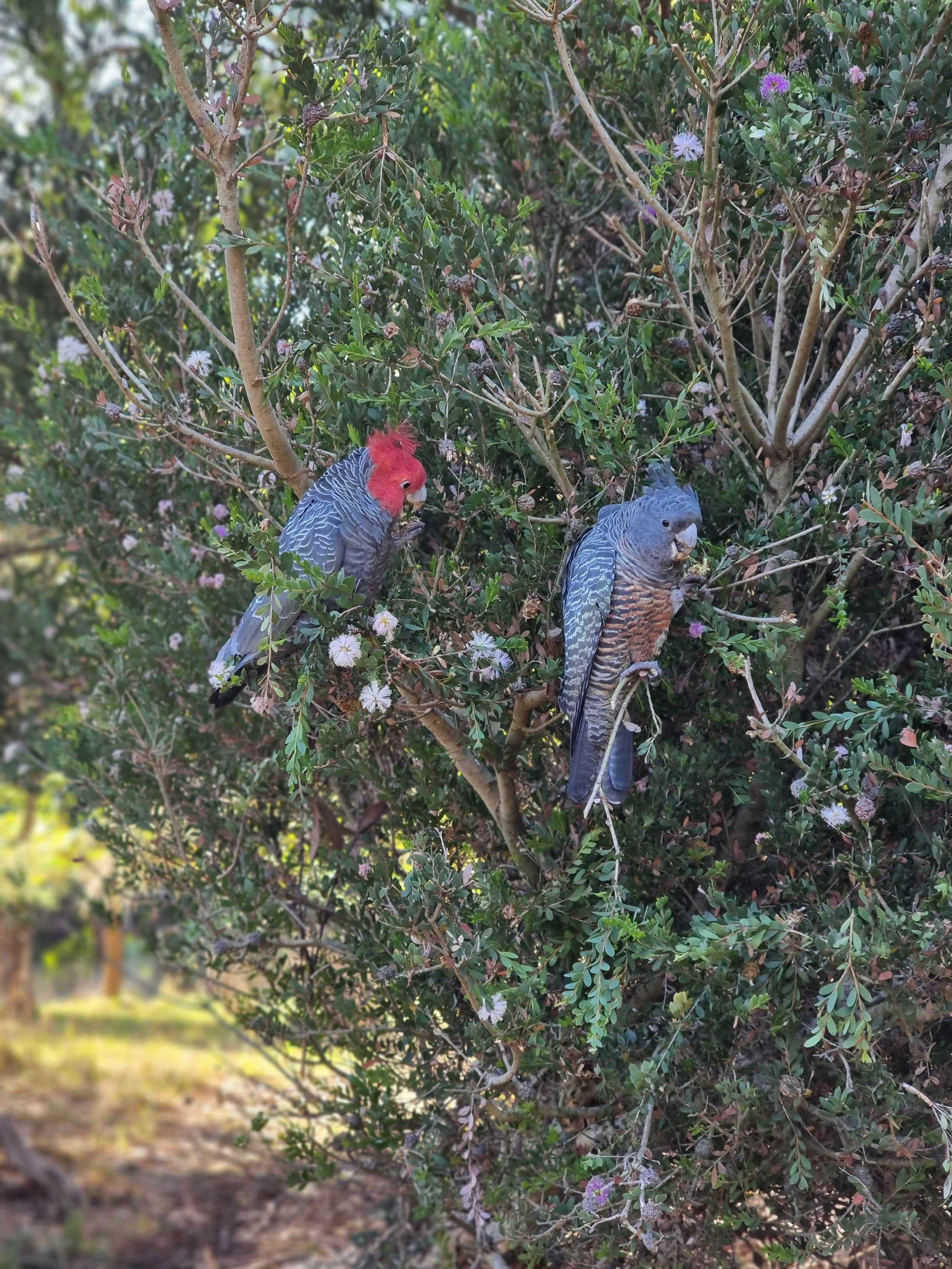
Gang-gang Cockatoo
Gang-gang Cockatoo
Callocephalon fimbriatum
Gang-gang cockatoos are found in the cooler and wetter forests and woodlands of south eastern Australia and can be seen frequently in the Wildlife Wonders Sanctuary. Listen for their call - like a creaking gate.
Book your tour for a chance to see Gang-gang Cockatoos at Wildlife Wonders.
About Gang-gang Cockatoos
They feed on native and introduced tree and shrub seeds and spend most of their days feeding in trees. They prefer eucalypts and wattles and will also eat berries, fruits, nuts, insects and insect larvae. They will also forage on the ground for fallen fruits or pine cones.
Mostly grey in colour with some lighter scalloping, the males have a red head and crest, while the females have a small, fluffy, darker grey crest. The edges of the feathers can be yellow or pink. Juvenile males can be distinguished by their brighter crowns and shorter crests. Gang-gang cockatoos are very social birds and are easily identified by their distinctive calls.
Gang-gangs prefer forests and woodlands with dense shrub understories. They need tall trees in order to build their nests, and loss of older hollow trees through land clearing has led to a significant reduction in numbers in recent years.



